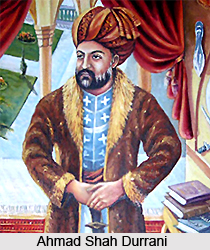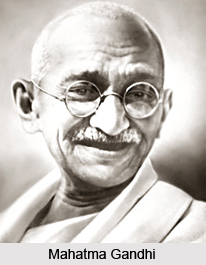 History of Auraiya District states that with the fall of Delhi and Kannauj in 1193 AD, Auraiya District passed with in the sphere of the Muslim rulers. To the early period of the thirteenth century is probably to be ascribed the invasion and settling of the Rajputs. With the passage of time, Sengars spread themselves over Bidhuna and Auraiya. Lately the western portion of the district passed into the hands of the Chauhans. Along with these Rajputs immigrants, Brahmans and Kayasthas also spread over the district. The allegiance, however, which some of these hardy tribesmen owed to successive occupants of Delhi throne, was for many years merely nominal. The trouble first began in the reign of Nasir-ud-din Muhammad Shah who ascended the throne in 1389 AD. Ibrahim Lodi, who succeeded his father in 1517 AD, lost much of his power and influence in his quarrel with his brother, Jalal Khan. The whole country was in an extremely disturbed condition, and, for two years before Ibrahim`s death in 1526 AD, most of the local governors appear to have been in a state of more or less open rebellion.
History of Auraiya District states that with the fall of Delhi and Kannauj in 1193 AD, Auraiya District passed with in the sphere of the Muslim rulers. To the early period of the thirteenth century is probably to be ascribed the invasion and settling of the Rajputs. With the passage of time, Sengars spread themselves over Bidhuna and Auraiya. Lately the western portion of the district passed into the hands of the Chauhans. Along with these Rajputs immigrants, Brahmans and Kayasthas also spread over the district. The allegiance, however, which some of these hardy tribesmen owed to successive occupants of Delhi throne, was for many years merely nominal. The trouble first began in the reign of Nasir-ud-din Muhammad Shah who ascended the throne in 1389 AD. Ibrahim Lodi, who succeeded his father in 1517 AD, lost much of his power and influence in his quarrel with his brother, Jalal Khan. The whole country was in an extremely disturbed condition, and, for two years before Ibrahim`s death in 1526 AD, most of the local governors appear to have been in a state of more or less open rebellion.
In 1760 AD Ahmad Shah Durrani invaded India. This was then in the possession of the Marathas, and accordingly in 1762 a Rohilla force was sent under Mullah Mohsin Khan to wrest the assigned property from the Marathas. The occupation, however, was merely nominal at first; the Zamindars refused to pay revenue to Inayat Khan and, secure in their mud forts set his authority at defiance. Strong reinforcements were sent to the Rohillas, including some artillery, under Sheikh Kuber and Mullah Baz Khan, and many of the smaller forts were destructed.
 Further, according to the history, from 1774 to 1801 the district of Etawah remained under the government of Oudh. Little is known regarding its history. For many years the administration of the district was in the hands of Mian Almas Ali Khan. The cession on 10th of November, 1801, the district was made over to the British Government by the Nawab Saadat Ali Khan together with the rest of the lower Doab and other tracts. Still for some years Etawah was threatened with Maratha inroads. In 1885, the Indian National Congress was established. In Etawah it had, however, not assumed the shape of a political organization. In 1920, the Congress declared that its objective was `the attainment of Swarajya by the people of India by all legitimate and peaceful means`. Towards this end, Mahatma Gandhi launched his famous Non Cooperation Movement all over the country in August of that year. In Etawah the response of the people to this movement was enthusiastic and wide-spread. On November 23rd, 1929 Gandhiji visited the district and addressed a large public meeting at Auraiya.
Further, according to the history, from 1774 to 1801 the district of Etawah remained under the government of Oudh. Little is known regarding its history. For many years the administration of the district was in the hands of Mian Almas Ali Khan. The cession on 10th of November, 1801, the district was made over to the British Government by the Nawab Saadat Ali Khan together with the rest of the lower Doab and other tracts. Still for some years Etawah was threatened with Maratha inroads. In 1885, the Indian National Congress was established. In Etawah it had, however, not assumed the shape of a political organization. In 1920, the Congress declared that its objective was `the attainment of Swarajya by the people of India by all legitimate and peaceful means`. Towards this end, Mahatma Gandhi launched his famous Non Cooperation Movement all over the country in August of that year. In Etawah the response of the people to this movement was enthusiastic and wide-spread. On November 23rd, 1929 Gandhiji visited the district and addressed a large public meeting at Auraiya.
In 1930, the Civil Disobedience movement was started in Etawah, as in other parts of the country. The first phase of the movement was violation of the Salt Act. The Quit India Movement of 1942 received wide support from people in the district. The district of Etawah has had contributed in the freedom struggle of the country. As per the history of Auraiya District, on 17th of September, 1997 Auraiya and Bidhuna tehsils were separated from Etawah District in order to form the new district of Auraiya. Since then the district administration is normal and the socio-economic environment remained as usual except minor ups and downs.






